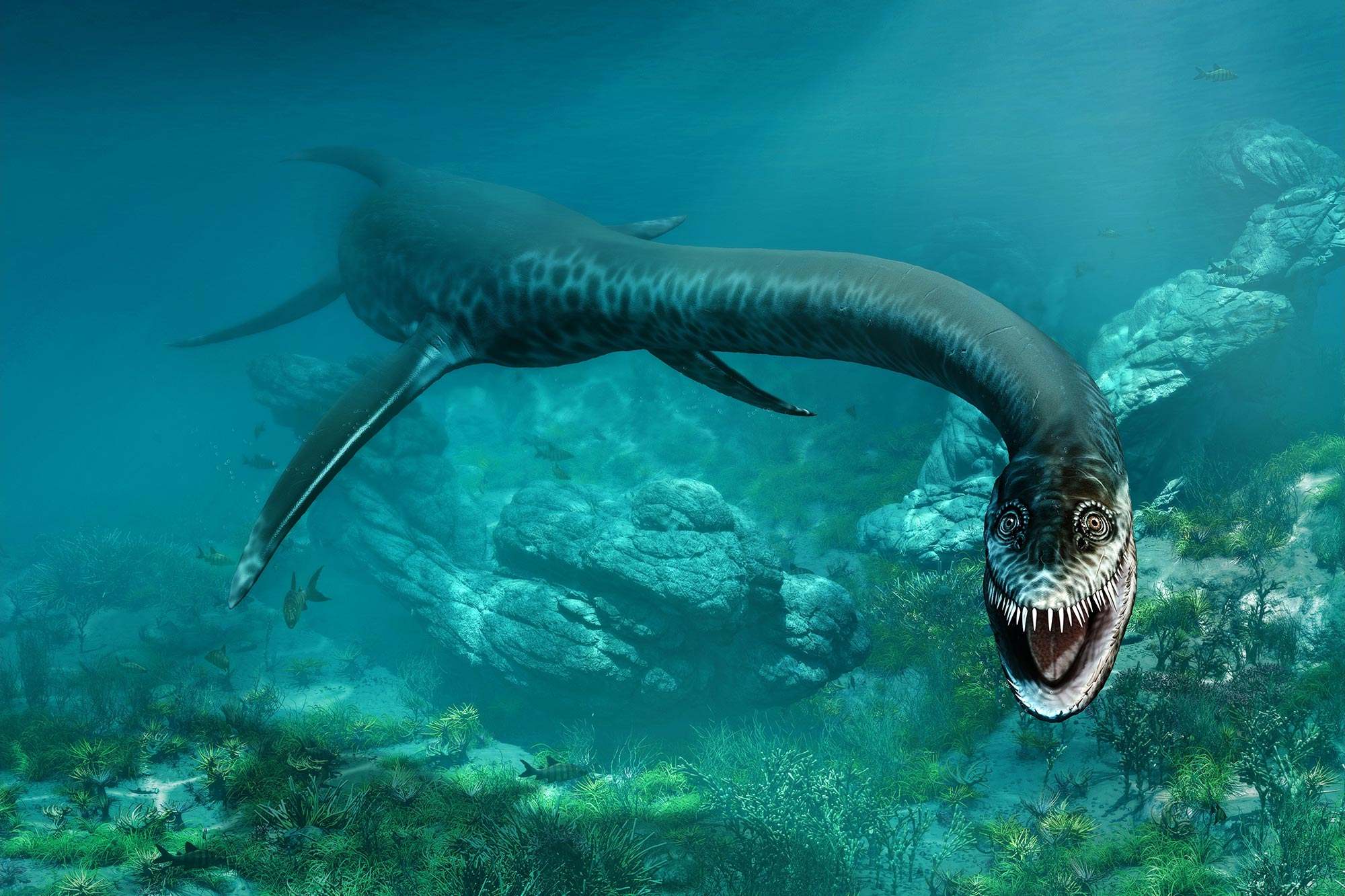
Key Takeaways:
- The Plesiosaur was a fascinating marine reptile that lived alongside dinosaurs, had a long neck, and was an excellent swimmer with a diverse diet, making it a unique and dominant predator.
- Despite its mysterious extinction, the Plesiosaur’s fossils have captured the imagination of paleontologists and the public, contributing to our understanding of prehistoric life and sparking fascination worldwide.
The Plesiosaur was a prehistoric marine reptile.
The Plesiosaur was a large aquatic reptile that lived alongside dinosaurs during the Mesozoic Era.
They lived in the oceans around 200 million years ago.
The Plesiosaur roamed the seas during the Jurassic and Cretaceous periods.
The Plesiosaur had a unique body structure.
Its body was characterized by a long neck, small head, and a barrel-shaped torso.
They were excellent swimmers.
The Plesiosaur had four paddle-like flippers that helped it navigate through the water with ease.
The Plesiosaur had a diverse diet.
They were known to feed on fish, squid, and other small marine animals.
The Plesiosaur was not a dinosaur.
Despite their association with dinosaurs, the Plesiosaur belonged to a different group of reptiles known as the Sauropterygia.
They ranged in size.
The Plesiosaur species varied in size, with some measuring as small as a few meters, while others reached lengths of over 15 meters.
The Plesiosaur had a long neck.
Some species of Plesiosaur had necks that contained up to 76 vertebrae, allowing for incredible flexibility and maneuverability.
Fossils of the Plesiosaur have been found all over the world.
Remains of these ancient creatures have been discovered on every continent, providing valuable insights into their existence.
They were air-breathing reptiles.
The Plesiosaur had to regularly surface to breathe air, much like modern-day marine mammals.
The Plesiosaur had a small head.
Compared to their long neck and body, the Plesiosaur’s head was relatively small.
The Plesiosaur was a dominant predator.
With their sharp teeth and powerful jaws, they were well-equipped to catch and devour their prey.
They were social animals.
Evidence suggests that Plesiosaurs lived in groups and may have even exhibited some form of parental care.
The Plesiosaur had a streamline body shape.
This body shape, along with their flippers, allowed them to move swiftly through the water.
They became extinct around 66 million years ago.
Just like the dinosaurs, the Plesiosaur disappeared at the end of the Cretaceous period, possibly due to the mass extinction event.
The Plesiosaur is not directly related to any living species.
Despite their similarities to certain marine creatures, there is no direct evolutionary connection between the Plesiosaur and any current animal.
Their fossils have captured the imagination of paleontologists and the public alike.
The discovery of Plesiosaur fossils has sparked fascination and contributed to our understanding of prehistoric life.
The name “Plesiosaur” means “nearer to a lizard” in Greek.
This name reflects their reptilian characteristics and their somewhat lizard-like appearance.
The Plesiosaur remains one of the most fascinating creatures to have ever existed.
Its unique anatomy, mysterious extinction, and prominence in popular culture continue to captivate people worldwide.
Conclusion
In conclusion, the Plesiosaur was truly a fascinating creature that roamed the Earth millions of years ago. With its unique body structure, long neck, and four flippers, it was adept at swimming and hunting underwater. Despite its size, it was not a dinosaur, but rather a marine reptile.Through fossil records and scientific research, we have gained valuable insights into the Plesiosaur’s lifestyle, diet, and habitat. It existed alongside other marine creatures during the Mesozoic Era and played a crucial role in the ecosystem as a top predator.Studying the Plesiosaur and other prehistoric creatures can provide us with a better understanding of our planet’s history and the diverse range of life that once thrived here. It serves as a reminder of the remarkable creatures that have inhabited our planet over time and highlights the ongoing importance of paleontology in shaping our knowledge of the natural world.
FAQs
1. What does the word “Plesiosaur” mean?
The word “Plesiosaur” is derived from two Greek words: “plesios,” which means “near to,” and “sauros,” which means “lizard.” It is an accurate name, as the Plesiosaur shares some similarities with both lizards and dinosaurs.
2. How big were Plesiosaurs?
Plesiosaurs varied in size, with some species measuring around 3 meters (10 feet) in length, while others reached up to 15 meters (50 feet) long. Their necks could be quite long, accounting for about half of their body length.
3. What did Plesiosaurs eat?
Plesiosaurs were carnivores and primarily fed on fish and other marine animals such as squid and ammonites. Their sharp teeth and strong jaws allowed them to capture and consume their prey efficiently.
4. Where did Plesiosaurs live?
Plesiosaurs lived in the oceans all around the world during the Mesozoic Era, which lasted from approximately 252 million to 66 million years ago. Fossils of Plesiosaurs have been found on every continent, indicating a global distribution.
5. Are Plesiosaurs related to dinosaurs?
Contrary to popular belief, Plesiosaurs are not dinosaurs. They both lived during the same time period, but dinosaurs were land-dwelling reptiles, while Plesiosaurs were marine reptiles. However, like dinosaurs, Plesiosaurs became extinct around 66 million years ago.
6. How are Plesiosaurs different from modern-day marine reptiles?
Modern-day marine reptiles, such as sea turtles and marine iguanas, have different body structures and adaptations compared to Plesiosaurs. Plesiosaurs had a distinct body shape, with their four flippers and long neck, which sets them apart from their modern relatives.
Was this page helpful?
Our commitment to delivering trustworthy and engaging content is at the heart of what we do. Each fact on our site is contributed by real users like you, bringing a wealth of diverse insights and information. To ensure the highest standards of accuracy and reliability, our dedicated editors meticulously review each submission. This process guarantees that the facts we share are not only fascinating but also credible. Trust in our commitment to quality and authenticity as you explore and learn with us.
